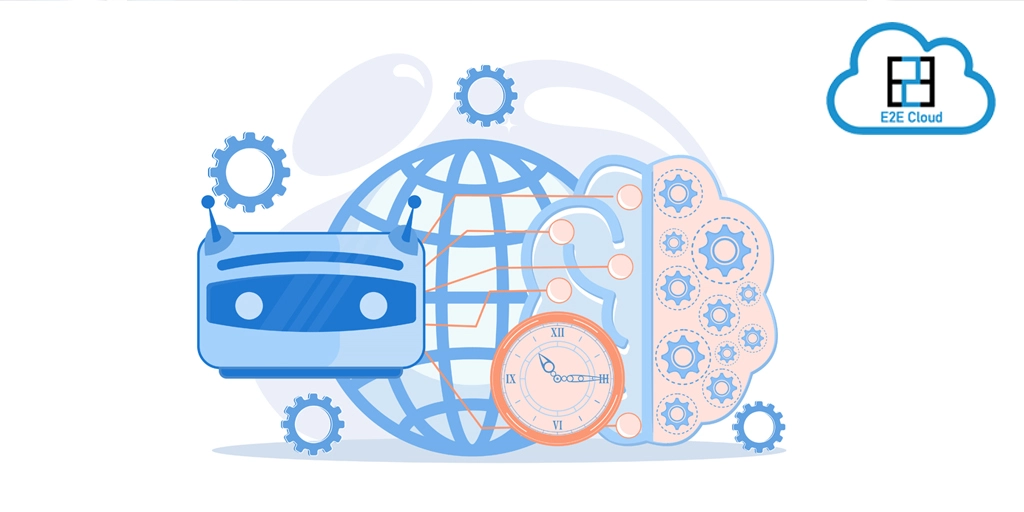Your business is considering moving data or applications to the public cloud. Perhaps you are hoping to reduce capital expenditures (CapEx), spin up resources for new projects more quickly or simply reduce your on-premises IT infrastructure. Whatever your objectives, implementing or extending your public cloud strategy can raise a lot of questions. Below are some of the most frequently asked questions—and answers—about embracing the public cloud.
1) What benefits can I realistically expect from integrating public cloud into my IT strategy?
The top benefits of public cloud are:
• Virtually unlimited capacity. But you only pay for what you use. Expanding your resources in an on-premises data center incurs CapEx and can entail high running costs even as machines are under-utilized. The public cloud can flex to meet evolving needs or spikes in demand without the cost of machines sitting idle in your data center.
• Greater agility. You can increase, decrease and change the resources you need. This allows you to innovate faster, deliver new revenue-generating opportunities and improve workflow processes.
• Simplicity. Often you can manage application deployment through self-service portals, reducing the administrative
burden on your IT team.
• Access to the latest technology. Unlike your private cloud or on-premises data center, Cloud Service Providers (CSPs) can refresh and upgrade their infrastructure frequently, so you benefit from the latest hardware and software without having to buy it.
2) What should I consider when choosing a cloud service provider?
Make sure the CSP you choose understands your business objectives—and is committed to helping you meet them.
Share the goals and expectations of your public cloud strategy with your provider and work with them to define the solution that’s best for you.
It’s important to choose a cloud provider that can grow with your business as your needs expand and as you deploy new applications. Look for providers that build their services on highly scalable technologies.
It’s also important to ensure your applications perform responsively for your customers, workers, partners and suppliers.
That’s why we offer servers powered by industry-leading Intel® Xeon® processors that maximize performance for your cloud applications.
3) How do I know that my data and applications in the public cloud are secure?
Security is rightly a key consideration for organizations thinking of moving to the public cloud. Research shows, however, that the public cloud is typically more secure than an enterprise data center, and through 2020, public cloud data centers are expected to suffer 60 percent fewer security incidents than traditional data centers. Most CSPs have security enabled from the hardware layer, establishing a root of trust from the core outwards and making attacks as difficult as possible.
4) How do I choose which workloads and data should move to the public cloud?
There are no hard-and-fast rules about which workloads and data should reside in the public cloud versus your existing on-premises infrastructure. To identify the best candidates for successful cloud migration, follow a process similar to this:
- Map your organization’s applications and their dependencies to gain a clear picture of what is currently running in your data center.
- Create an inventory of your applications that includes: application type and version; operating system; server, storage and networking characteristics; security profile and rules; interdependencies; and performance requirements.
- Identify the applications that can be moved to the cloud with little re-engineering (“lift and shift”) and those that might require substantial re-architecting to migrate.
- Identify the applications that will deliver the greatest business benefits if moved to the cloud (for example, those with unpredictable or highly variable storage and networking requirements).
- Take advantage of existing models for optimal application placement, such as the Intel Affinity Model. The chart below lists common applications along the x-axis and applies an Attribute Score based on the typical data volume, integration, security, and performance requirements for each application. The Attribute Score is used to determine whether the workload tends to favor a public or private cloud deployment.

5) Which path to the cloud is right for my organization?
Implementing a public cloud strategy does not necessarily require that you move all your applications and data
wholesale to a CSP. Your strategy may focus on the public cloud, or you could take a hybrid cloud or multi-cloud approach.
Hybrid cloud: A computing environment that combines public cloud(s) and private cloud by allowing data and
applications to be shared between them. Organizations can benefit from seamlessly scaling on-premises
infrastructure to off-premises infrastructure. Hybrid cloud is a subset of multi-cloud.
Multi-cloud: A mix of public, private or hybrid cloud solutions (not necessarily using different cloud types). It may be a mix of private clouds or a number of public clouds provided by more than one CSP, or it may use a combination of
private and public cloud services. Multi-cloud allows organizations to combine best-of-breed solutions and services,
providing intelligent and dynamic allocation of resources and workloads to meet business requirements.
Here are key steps to consider when deciding on your path to the cloud:
- Assess the business objectives you want to achieve (e.g., reduce CapEx, deploy new projects quickly, improve
scalability to support applications with variable demands). - Determine the applications that are good candidates for migration to the public cloud.
- Identify the infrastructure you need to support the applications you prefer to keep on-premises.
- Work with your wider IT team and your chosen CSP to determine how to use the public cloud alongside your
existing infrastructure. Based on your objectives and your application placement strategy, a multi-cloud or hybrid
cloud approach may make sense. - Plan your migration path carefully. Start by migrating low risk “lift and shift” applications to the public cloud, then
use what you’ve learned to optimize the deployment and ongoing operational processes.
6) What are the cost parameters for migrating to the public cloud?
As with many IT decisions, the cost of your chosen cloud strategy will depend on your requirements and how you
choose to proceed. The main factors influencing the cost are:
• Scale and speed. How much capacity will you need from your CSP? What level of performance will your migrated
applications demand? Many vendors and manufacturers provide tools and methods to help you “size” your resource
needs. We can help with that effort.
• Value-added services. What additional services do you want your CSP to provide? Many cloud providers offer
managed services and additional security services for an extra fee.
• Private cloud. If you choose a multi-cloud or hybrid strategy, the factors to consider are the cost of the private cloud portion and the effort required of your IT staff. While many large companies choose to custom engineer their private cloud infrastructure, medium-sized and smaller businesses often choose assemble-to-order options or
converged/hyper-converged infrastructure solutions that reduce IT effort and costs.
One way to control costs is to start small with a single application or proof-of-concept pilot. Purchase just enough
infrastructure to meet that need and to get IT more comfortable with cloud migration. Then you can add more
workloads and infrastructure at your own pace.
7) How long will it take to implement my cloud strategy?
It’s important to remember that migrating to the public cloud or establishing a multi-cloud strategy doesn’t mean simply hitting the ON switch and instantly moving from your current data center to a public or multi-cloud infrastructure. Many companies make this journey in small increments (often one application at a time) and take care to learn from each step along the way.
Another thing to remember is that your cloud strategy will continue to evolve over time as your business needs shift and cloud technologies develop. It’s best to look at your cloud strategy as a long-term, dynamic part of your ongoing IT strategy.
8) How much expertise will my cloud strategy require from my IT staff?
Your IT staff will need to become aware of cloud operations, but the level of knowledge required can vary greatly
depending on the type of on-premises cloud infrastructure you deploy and how you plan to use the public cloud.
For your on-premises private cloud, a custom-engineered solution can require a great deal of time. But a hyperconverged infrastructure—where each resource has compute, storage, networking, virtualization, orchestration and manageability built-in—can be deployed quickly and requires only high-level knowledge about scaling and application deployment.
Hyperconverged systems are also designed to make infrastructure scaling easy, with minimal effort required to add new resources to the infrastructure pool.
We can help you make the right choices for your public cloud infrastructure, ensuring you get the performance and features you need based on your application requirements.
9) What makes Intel® technology right for the public cloud?
Intel innovations are already powering the majority of cloud servers, and for good reasons:
• The latest Intel® Xeon® Scalable processors deliver outstanding performance across a wide variety of modern
applications.
• These processors include advanced, built-in security features to help protect applications, data and infrastructure.
With any cloud strategy that takes advantage of Intel® technologies, you can be sure that your applications and data benefit from the performance, security, and resiliency you need to grow your business through digital innovation.


.png)







